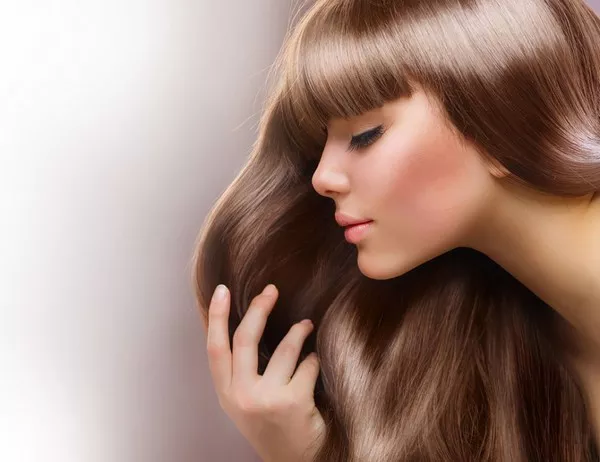In today’s era of ubiquitous social media sharing (hello Facebook, Instagram, and TikTok), the pressure to maintain a flawless appearance is more intense than ever. This entails adhering to meticulous hair care routines involving frequent dyeing, straightening, curling, and a myriad of other treatments, almost on a daily basis. However, the price for these stylish transformations is often paid by our hair’s health. A 2013 study by Head and Shoulders revealed that a staggering 91% of American women engaged in daily hair practices that potentially led to damage. Beyond the obvious culprits like scorching hot styling tools and harsh dyes, seemingly innocuous actions such as brushing wet hair, chemical treatments, tight ponytails, neglecting heat protectants, using hair extensions, and even sun exposure can contribute to hair harm.
But how can you accurately assess whether your hair is genuinely damaged and to what extent? Recognizing the signs of damage is crucial, and this comprehensive breakdown from Women.com is here to help.
Diminished Elasticity: A Telltale Sign
One of the key indicators of hair damage is diminished elasticity. A quick test involves gently pulling a strand of hair between your fingers. If it stretches around 30%, your hair is likely healthy. However, excessive stretching, snapping, or breakage signifies damage. Frequent hair dyeing is a common perpetrator in stripping hair of its natural bounce. The chemicals in hair dye compromise hair shaft bonds, resulting in structural weakness. This often necessitates cutting off weakened strands to foster regrowth.
This doesn’t mean you must forsake hair dye entirely. Opt for longer intervals between salon visits, consider natural dyes, or limit dyeing to just the roots. Semi-permanent dyes, which are ammonia-free and tend to remain on the hair’s surface, are a gentler option.
Split Ends: The Dreaded Hair Dilemma
Split ends, medically termed trichoptilosis, are a prevalent sign of damaged hair. Hair shaft ends literally split open due to dryness, heat damage, or chemical irritation. Factors contributing to this phenomenon include abrasive hair ties, harsh brushes, excessive heat from styling tools, chemical treatments, and frequent washing.
Diverse types of split ends exist, ranging from minor Y-shaped versions, which can be mitigated through nourishing hair masks and reduced heat tool usage, to more severe Y-shaped splits exposing cortical cells. Tree or fork splits represent advanced damage requiring salon intervention and expert advice.
Brittle Strands: A Fragile Situation
Hair damage isn’t limited to split ends; brittle strands are another manifestation. Breakage often originates near the ends due to prolonged exposure to heat and external factors. Sections of hair can separate or dangle, contributing to excessive hair loss during washing, brushing, or styling. Over-processed hair resulting from excessive color treatments or chemical procedures is a typical cause.
To combat breakage, prep your hair with a nourishing mask prior to color treatments. This enhances moisture retention, reducing vulnerability.
Bubble Hair: The Hidden Heat Hazard
Excessive heat exposure to wet hair can lead to “bubble hair.” When heat and water combine, hair boils, transforming water into steam that gets trapped. This expansion creates air bubbles within the hair, rendering it weak, frizzy, and prone to breakage. Signs are particularly noticeable at the ends, resembling straw-like textures.
Prevent bubble hair by partially air-drying or towel-drying hair before using blow dryers or styling irons. Wet hair is susceptible to damage, so detangle gently using specialized tools.
Thinning Locks with a Twist
Thinning hair can arise from various causes, including alopecia, illness, hormonal imbalances, and yes, even damage. Damaged hair may exhibit thickness at the roots while appearing thin and sparse at the ends. Blow-drying, hot iron tools, and certain hair extensions can contribute to this phenomenon.
Thinning due to split ends occurs as strands peel off, making individual hairs appear thinner. Moreover, hair extensions can exacerbate damage. Strategic measures, like minimizing heat usage and gentle handling, can help mitigate this.
Frizz: A Signal of Strain
Unexplained frizz in naturally smooth hair often indicates damage. Increased volume and frizziness accompany weakened, broken hair. Frizz can result from split ends, heat exposure, or inadequate moisture.
Address frizz with leave-in conditioners, as they restore moisture and tame unruly hair. While damaged ends may require a trim, leave-in conditioners help manage frizz in the meantime.
Flyaways: Not Just a Style Quirk
Flyaways—shorter hairs that resist styling—can suggest damage if they were once longer, healthier strands. Disrupted hair cuticles create tangles, making styling challenging. Moisturizing shampoos, conditioners, and detangling sprays combat these effects.
Dull Hair: A Mirage of Misery
Lackluster, dull hair may indicate damage to the hair’s cuticles, which contribute to shine. Damaged cuticles compromise color vibrancy and lead to dryness, exacerbating brittleness and breakage. Dyeing damaged hair can result in uneven, short-lived color due to porosity.
Combat dullness with moisturizing products and seek professional advice for dyed hair that doesn’t hold color.
Tough Tangles: A Distinctive Distress
Persistent tangles can signify hair damage, especially when combined with other indicators. Damaged cuticles lead to misplaced hair strands, creating knots that worsen during brushing. Moisturizing products and detangling sprays help manage tangles while preserving hair health.
Stiff Hair: A Tangible Clue
Physically assessing your hair’s texture can reveal damage. Stiff, brittle, or crunchy hair, particularly when wet, points to damage from factors like sun exposure, saltwater, chlorine, and heat. Regular trims and treatment masks are valuable remedies.
Recognizing these 10 telltale signs empowers you to proactively address hair damage. A mix of preventive measures and targeted care can help you maintain your hair’s vitality and luster.

